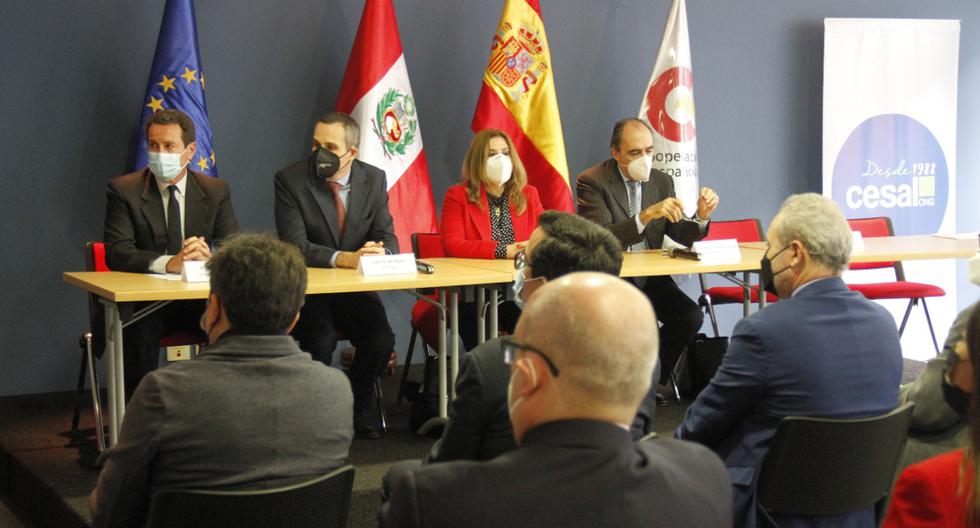Santo Domingo.- In the extraordinary session this Friday, the Chamber of Deputies Urgently approved with modifications and unanimously the draft organic law of single planning regions of the Dominican Republic.
The piece of 12 articles and whose proponents are the senators Felix Baptist Y Frank Romero, counted in its second reading with 145 yeses of all the voters. It has just been approved in the Upper House, however, as it undergoes change, it will return to the Senate for ratification or eventual rejection, knowing that the initiative will expire at the close of this legislature (this Tuesday).
The Organic Law of Single Planning Regions of the Dominican Republic regulates the organization, composition and delimitation of the single planning regions in the national territory, as detailed in the legislation, and aims to promote better development at the national, regional and local levels. , which includes municipalities and municipal districts, in all the actions of the different levels of the State, guiding public investment policies, plans, programs and projects to ensure greater territorial cohesion.
A region is any territorial delimitation that has been modeled historically and that has its own distinctive resources, such as: natural and economic wealth, heterogeneous cultural identity, sense of belonging, communities with collective memory and political and social forces with spaces for democratic participation.
Regarding the modification of article 7, numeral one, the legislation stated: “Cibao Norte Region. Composed of “the municipalities” Santiago, Espaillat and Puerto Plata”. Now it says: North Cibao Region. Composed of “the provinces” Santiago, Espaillat and Puerto Plata” ”province”
Division of the national territory into single planning regions
The regionalization of the country for the planning, articulation, operation and formulation of public policies will be structured in 10 regions made up of their respective provinces and municipalities.
The Cibao Norte Region will be made up of the provinces of Santiago, Espaillat and Puerto Plata; Cibao Sur Region, will be composed of the provinces of La Vega, Sánchez Ramírez and Monseñor Nouel; Cibao Northeast Region, formed by the provinces of Duarte, Samaná, Hermanas Mirabal and María Trinidad Sánchez; and the Cibao Northwest Region, made up of the provinces of Montecristi, Dajabón, Santiago Rodríguez and Valverde.
Likewise, they are part of the 10 unique planning regions Valdesia Region, made up of the provinces of San Cristóbal, Peravia and San José de Ocoa; and the Enriquillo Region, made up of the provinces of Barahona, Bahoruco, Independencia and Pedernales; The Valley Region; integrated by the provinces San Juan, Azua and Elías Piña; Yuma Region, formed by the provinces of El Seibo, La Romana and La Altagracia; Higuamo Region, completed by the provinces of San Pedro de Macoris, Monte Plata and Hato Mayor; and the Ozama Region, made up of the Santo Domingo province and the National District (Santo Domingo de Guzmán).
The territorial limits of the 10 regions are those established for the provinces that comprise them, according to their creation laws.
Ministry of Economy
The Ministry of Economy, Planning and Development, as the governing body of the National Planning and Public Investment System, is responsible for coordinating the implementation of the regionalization of the national territory.
The government body must, within a period not exceeding two years counted from the enactment of this law, define, with the Ministry of Finance, the creation and application in the public financial system of a new geographic classifier; and coordinate with all public bodies that act in a decentralized and/or decentralized manner in the territory, so that they adopt the regional classification in all their policies, plans, programs and projects.
The Ministry of Economy will have to arrange for the National Statistics Office to produce social, economic, political and environmental statistics according to the regionalization scheme; organize the National Territorial Information System according to the regionalization scheme. Among others.
Regional Planning Offices (ORP) and Regulation
The Ministry of Economy will open Regional Planning Offices (ORP) in the 10 regions that are consigned in the law.
The ORP will have as main function to coordinate the management of the planning instruments in the territory, established in the National Planning System of the Dominican Republic.
The Executive Branch will dictate the regulations for the application of this law, which will be submitted for its consideration by the Minister of Economy within a maximum period of 180 days from the date of its entry into force.


















